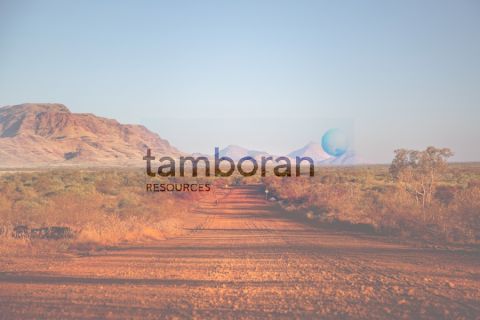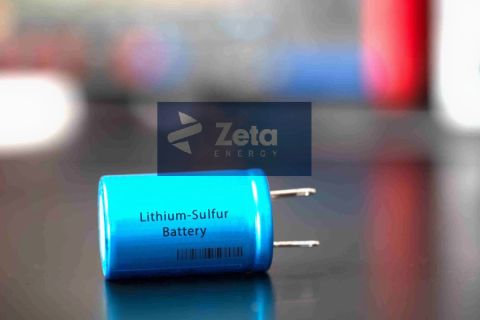Mention oil and gas partnerships to almost anyone in the investment or energy business and a frown appears. This segment of the capital markets has long been looked down upon as a result of negative experiences and scandals in the 1980s and 1990s. While the potential for risk and scandal is ever present, there remain several legitimate players that offer oil and gas drilling investments. Throughout the oil industry's ups and downs, this form of investment vehicle has remained enticing to thousands of individual and institutional investors. In most instances, an investment in a drilling or exploration program that searches for oil and gas in the U.S. includes certain tax advantages. Intangible drilling costs (IDC) are incurred as a result of nontangible expenses such as for services and equipment rentals. Federal tax laws (and in most cases state tax laws) allow for these expenses to be deducted at the time of expenditure. Furthermore, IDC may account for up to 80% of total drilling expenditures, providing for potentially significant tax savings. Several producers have taken these tax benefits and added another twist. By forming a partnership or like vehicle that invests in the drilling of a series of wells, individual investors can recognize significant tax savings on both their investment and any income that may result from the production and sale of the oil and/or gas. In addition, several innovative approaches have been developed so that these tax advantages may be deducted against most forms of taxable income, or allowing for 100% deduction of investment, thereby providing a significant advantage to individuals in higher tax brackets. In most instances, investors can determine at the time of investment whether to take a position as an "active" or "passive" investor. In almost all cases, after the drilling phase is complete, all active investors-with the exception of the sponsor-are converted to a passive ownership position to reduce potential liability. Given the potential to make the initial investment active, the initial write-off can be utilized to reduce taxable income, thereby reducing the overall cost basis of the investment. In many instances, investors view any potential return from the drilling of wells as more attractive than the known "return" of paying income taxes. Hundreds of millions of dollars are raised each year in the U.S. for these types of investments. Likewise, there are several hundred individuals, companies or organizations that create and offer these types of investments to individual investors. Survey methods During the past several years, Irvine, California-based C.K. Cooper & Co. has conducted an annual review of these investments and compared them based on legal structure, disclosure, investor communication and financial returns. When discussing tax-advantaged oil and gas projects, there are two primary measures of economic performance: cash-on-cash return and after-tax return. Cash-on-cash return is straightforward-the percentage of the initial investment that has been returned in cash. Obviously, the goal is to achieve 100% cash-on-cash return (complete return of investment) as quickly as possible and then during the life of the project, achieve some multiple to this investment. After-tax return is a little more complex. When taking into account the tax savings, the actual cost basis of the investment can be reduced as a result of tax savings. Thus, any cash distributions from the sale of oil and/or gas will have a stronger associated rate of return. Furthermore, a depletion allowance is taken on revenue distributions ranging from 15% to 19%, providing for additional tax savings on income generated. It is not uncommon for the oil and gas properties owned by investors to be sold-to the sponsoring company or to another oil and gas issue outright. For instance, Tulsa-based BRG Petroleum sold its interest, and the interests of its tax-advantaged partnerships, to Seagull Energy in 1998. This sale created a one-time distribution which was treated as an extraordinary event. In most cases, this type of event is possible for each oil and gas project; however, once taken the project ceases to exist. Another example of an extraordinary item might be Section 29 tax credits for unconventional or tight gas. Certain projects can provide these tax credits to investors, which may create extraordinary tax savings for the participants. Therefore, we analyze these investments for both cash-on-cash and after-tax returns, including and excluding extraordinary events. During the past 10 years, the operating focus of most sponsors of these partnership investments has been in the Appalachian Basin. This basin, known for relatively low-risk drilling, provides higher success rates, but production rates are generally low compared with other U.S. basins. However, production in this basin has historically carried a premium price at the wellhead given its proximity to the gas-hungry, populous and industrial Northeast. This focus in Appalachia has dwindled during the past several years, as both the oil and gas sponsors and their investors seek higher rates of return. Still, various investment options are available. C.K. Cooper analyzes tax-advantaged drilling projects that offer a variety of characteristics: coalbed methane, Midcontinent drilling and activity in the Rockies, Appalachia and even California. Obviously, each basin has its own risk-reward scenario, allowing investors to consider the level of risk they seek and the potential returns associated. The results Certain key factors separate the more successful projects from others. Promote terms. Obviously, individual investors are buying into a drill-ready prospect inventory developed by the sponsoring company or general partner. Like most industry transactions, some form of promote is involved with the prospect generator or sponsor receiving the advantaged ownership position. This concept in and of itself is not the problem. However, projects can become overpromoted, suggesting that even a geologic success could result in an uneconomic well, based upon the fees and promote burden due the originating sponsor company before the investors get their share of the payout. Drilling margins. Many of the sponsors recognize significant profit potential through the drilling phase of the partnership or project. In almost all cases, investors enter into a turnkey drilling contract whereby cost overruns do not result in cash calls to the investor. As such, the drilling company or sponsor builds in a margin to cover such potential overruns, thereby creating a potential profit center for the company. The built-in margin can be well beyond reasonable. In most cases, we find acceptable turnkey margins to be in the 15% to 22% range. However, we believe turnkey contracts are useful. Ownership stake. Many of the sponsors take little ownership interest in the wells being drilled, or receive all of their interest after payout. While this might sound appealing, it actually creates a misalignment of interests. In general, the more successful programs are offered by sponsors who take a larger working-interest percentage and pay their share of the expenses in cash. By doing this, their motivation then remains simple: drill the best well for the least amount of capital outlay to achieve the best production rates and ultimate return. This benefits both the investor and company. In 2001, the following companies (in alphabetical order) participated in C.K. Cooper's annual study. BRG Petroleum. This private producer has been offering tax-advantaged drilling projects since 1987. BRG use the partnership as its investment vehicle and has enjoyed solid returns for itself and its investor partners. In particular, the sale of its oil and gas assets in 1998 to Seagull Energy resulted in an extraordinary distribution. Since that time, BRG has offered one drilling partnership per year and continues to provide solid economic results. In 2000, it ranked first in returns when including extraordinary distributions. In 2001, it ranked second in almost every key measure of performance. Caravel Resources. This private Garland, Texas-based company, through its affiliation with Tauren Exploration, provides tax-advantaged oil and gas investments. Prior to 2001, a limited-liability-company format was used and was recently changed to an investment partnership. Last year, Caravel sold the bulk of its assets to Cubic Energy Inc. for stock, resulting in an extraordinary distribution. As a result, Caravel ranked first in 2001 for returns including extraordinary distributions. Daugherty Resources. This small, publicly traded producer (Nasdaq: NGAS) based in Lexington, Kentucky, continues to concentrate its exploration and development efforts in the Appalachian Basin, which is characterized by longer-life reserves, providing income for up to 20 to 30 years. Started in 1996, Daugherty is relatively new to the tax-advantaged drilling program business and as a result, it might be too soon to tell about real investment returns. Furthermore, Daugherty has suffered from delays in distributions related to infrastructure issues that delay production, but distributions have been improving. One unique aspect of Daugherty's drilling projects is the ability of the investor to convert or tender its partnership unit to the company in exchange for common stock. While there are conditions, this does provide the potential for liquidity in the future. North Coast Energy. This Cleveland-based publicly traded producer (Nasdaq: NCEB) has been offering tax-advantaged drilling partnerships since 1981. In many ways North Coast has been slowing its partnership activities, as its overall focus has changed during the past several years. However, one drilling partnership has been offered in each of the past years, continuing to focus on shallow Appalachian production. As a result, North Coast has ranked No. 1 in drilling success rates for the past two years. Petroleum Development Corp. Based in Bridgeport, West Virginia, this company is the largest provider of tax-advantaged partnerships in our study. This public company (Nasdaq: PETD), has ranked first on total capital raised for three consecutive years-more than $40 million was raised in each of the past two years. Starting in 1997, PDC began to move a portion of its drilling activities outside its Appalachian core into Michigan and the Rockies. During the past two years, almost 80% of the drilling capital it has raised has been deployed in the Rocky Mountains. As a result, C.K. Cooper expects to see an increase in overall financial performance, as the production profiles of Rockies wells are aggressive when compared with the maturing Appalachian production. PDC has not conducted any kind of sale of assets, and as a result ranked fourth in financial performance when not including any extraordinary distributions. Royale Energy Inc. This San Diego-based producer (Nasdaq: ROYL) has focused on California, resulting in lower average drilling success rates (ranked seventh in 2001) but providing solid financial performance. In particular, the huge surge in gas prices in California during 2000-01 provided some stellar distributions and vaulted Royale to first place in financial returns when not including extraordinary distributions. Royale has ranked first on cash-on-cash distributions for four consecutive years. Warren Resources Co. Based in New York City, this privately held firm is the second-largest sponsor in the C.K. Cooper study, based on dollars raised. In our review, we found several innovative financial tools utilized by Warren to offset potential risks associated with exploration. Somewhat like PDC, Warren has been changing its exploration focus during the past several years. Starting in 1999, it began an extensive development of coalbed-methane gas reserves in Wyoming. Like any coalbed-methane play, the dewatering process has deferred financial results. However, by fourth-quarter 2001, partnership distributions were on the rise. Wolverine Energy. This private East Lansing, Michigan, firm has been providing tax-advantaged oil and gas projects for several years. It uses the limited-liability-company form of investment and has been a leader in tax innovations, including the use of Section 29 tax credits. Like Warren Resources, Wolverine has focused on coalbed-methane fields during the past several years, with true financial performance being deferred due to dewatering. While the drilling-partnership aspect of the capital markets remains obscure, in 2001 more than $100 million was raised by the participants in this study alone. So what kind of financial returns can be expected by investors in these types of projects? The potential of significant tax savings combined with potential returns through oil and gas production or asset sales will continue to provide sufficient incentive for investment. If the C.K. Cooper study demonstrates anything, it shows there remain legitimate sponsors of these types of investment programs, and that investors can recognize unique advantages through them. M Alex Montano is the managing director, oil and gas group, for C.K. Cooper & Co. Inc., an investment-banking and brokerage firm based in Irvine, California.
Recommended Reading
U.S. Shale-catters to IPO Australian Shale Explorer on NYSE
2024-05-04 - Tamboran Resources Corp. is majority owned by Permian wildcatter Bryan Sheffield and chaired by Haynesville and Eagle Ford discovery co-leader Dick Stoneburner.
1Q24 Dividends Declared in the Week of April 29
2024-05-03 - With earnings season in full swing, upstream and midstream companies are declaring quarterly dividends. Here is a selection of dividends announced in the past week.
Analyst Questions Kimmeridge’s Character, Ben Dell Responds
2024-05-02 - The analyst said that “they don’t seem to be particularly good actors.” Ben Dell, Kimmeridge Energy Partners managing partner, told Hart Energy that “our reputation is unparalleled.”
Tellurian Reports Driftwood LNG Progress Amid Low NatGas Production
2024-05-02 - Tellurian’s Driftwood LNG received an extension through 2029 with authorization from the Federal Energy Regulatory Commission and the U.S. Army Corps of Engineers.
Zeta Energy Appoints Michael Everett as COO
2024-05-02 - Prior to joining Zeta Energy, a lithium-sulfur battery developer, Michael Everett previously served as president and COO at Advanced Battery Concepts.





